Oh, the dreaded toddler potty training.
If you ask parents of small children about their biggest struggles, most will say helping kids sleep and teaching kids to go on the potty. It’s an adventure, and teaching a young child to do just about anything takes time and endless patience. This is why another huge struggle is learning solutions besides yelling at kids. Parenting can be hard.
Heck, it took about a year to teach our toddler to stop biting other people. Talk about a long road! Entering into my third trimester of pregnancy, my husband and I wanted to give potty training the good ‘ole college try before the new baby arrived. The toddler poop in cloth diapers was nearly killing us!
It. was. so. gross.
So either our toddler needed to learn to potty or we need to invest in a couple of hazmat suits. We both decided that if it wasn’t working, we would simply accept it, move on, and try again several months later after the birth when things settled down. No biggie.
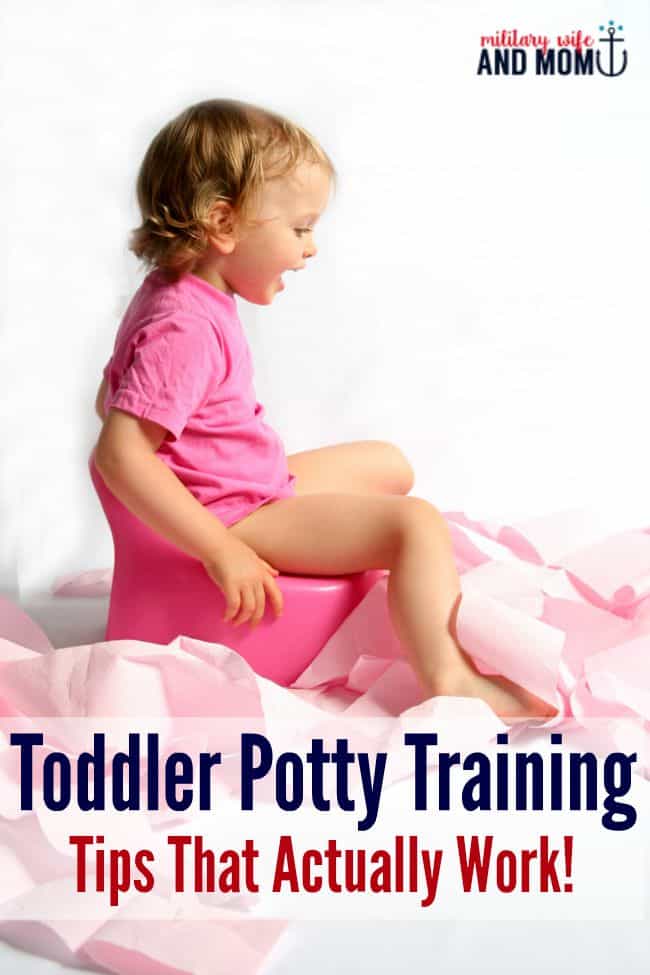
Most parenting experts advise potty training when other things in life are relatively stable. Learning to potty is a big change for a toddler, and keeping everything else in life low key seems imperative to success. In our case, we didn’t want to potty train too soon before or after the birth of our second child.
I did not have high hopes for potty training.
First of all, my son has a speech delay. His ability to communicate is poor, which meant letting me know he needed to potty was going to be an issue. Second, my son is strong willed and very independent. He does not always appreciate being told to do something. Although, what toddler does?
So the real questions are this:
1. How did we manage to overcome the speech delay?
2. How did we manage to overcome the resistance to using the potty?
3. How did we manage to help a little 25 month-old boy to use the potty successfully?
If you have a young boy or girl and you are considering potty training, I am going to share my most important steps that are key to success!
Plant the seed.
Teaching a toddler just about anything is a challenging experience. It takes much diligence, patience and time to shift from one habit to another. We found it extremely beneficial to plant the seed ahead of time.
Here are a few great ways to plant the potty training seed:
1. Allow your child to always come to the bathroom with you. Talk about what is happening and allow your child to see what is happening.
2. Encourage some diaper free time each day. This may result in accidents, but the sole purpose is to encourage your child to learn what is happening with his or her body.
3. Keep a potty around the house and allow your child to sit on the potty. If your child does go to the bathroom, talk about what is happening.
4. When your child is going to the bathroom, again talk about what is happening and allow him to see what is happening.
The goal of all this seed planting is to lay the foundation for potty training or learning when you and your child are ready to give it a try. This was a huge in helping our toddler understand the potty in a shorter period of time.
Offer the opportunity.
My husband and I are big believers in offering our son the opportunity to learn a skill regardless if we think he is ready or not. For example, our son didn’t seem ready for learning to potty at first glance. His communication was poor, he didn’t seem overly interested in the potty, and of course, he just turned two. But what if we gave him the opportunity to learn before we decided that he wasn’t capable or ready to learn?
That is our exact approach. We continue to offer the opportunity to learn to potty. If it doesn’t work out, no big deal. We move on and try again in a few months. The goal is not to offer “tough love” or to force a child to do anything, but rather to continuing to offer the opportunity to learn. How do you know if you don’t actually try, right?
Gather these supplies ahead of time.
These are the products we use in our home. You may find them useful as well!
Potty Train in a Weekend | My friend Becky wrote this book and it’s extremely popular among parents. Mainly because it really does work. I whole-heartedly agree with using her method to get started with potty training for kids of any age.
Potette Plus | A perfect on-the-go potty. It fits in my diaper bag and you can put it on any toilet seat in a restroom. You can also pop it open and it will serve as a standalone potty. Put it in the grass or the sand and allow your child to go right there. Or you can use a plastic shopping bag to catch the potty and dispose of it in a trash can. This is perfect if you have a hatchback car. Simply allow your child to potty right in the trunk area and dispose of the bag afterward.
Baby Bjorn Potty Chair | This is the small potty we use in our home in various rooms. While you might not love using a little potty, most pediatricians recommend this as a preferred style of potty chair. This potty chair allows your child to plant his feet firmly on the ground to engage those pelvic floor muscles and encourage going to the bathroom.
Arm and Hammer Potty Seat | The seat we put on the big potty in our home. It’s great to use in a pinch and also something you will eventually transition your child to once he or she gets a bit older.
Gerber Training Pants | Any underwear will do, but these are great because your child will feel wet while keeping the pee from forming a huge puddle on the floor. I don’t use them all the time, but if I sense an accident might happen, I use these. I also love to use the Gerber Trainers when we are out running errands along with a Flip Cloth Diaper Cover
over them as a back up. You have to live real life right? Accidents are going to happen. These can help keep you sane during the potty learning process.
Offer 100% of your attention.
Clear your schedule so you can offer your child 100% of your attention at least for the first several days. The key to success is to really help your child learn during the initial learning period and reinforcing it for several more days after the foundation is set. Each accident or “miss” is an opportunity to teach your child where the potty is supposed to go. If your attention is elsewhere and your child has an accident, the opportunity for learning is missed, creating a very frustrating and confusing experience for both child and parent.
Keep reasonable expectations.
Teaching your child a new habit (using the potty) and breaking an old habit (using a diaper) takes time for a little one to understand and remember. Expect lots of accidents and know that is completely normal. In our home, we saw each accident as another opportunity to learn and reinforce the new habit. Yes, some days accidents felt very frustrating, but we knew keeping our cool and staying positive was our best shot at helping our toddler learn.
Facilitate autonomy.
By using the Baby Bjorn potty in our home, we were able to overcome the speech barrier and resistance of being told when to potty. When our son resisted the potty, it had little to do with not liking the potty. It was more about him wanting to decide for himself when to potty.
Within only a few weeks, our son was able to potty himself 100% of the time without prompting when at home. Because it is quicker and easier for him to potty without worrying about underwear, we often allow him to run around the house bottomless. When he needs to potty, he simply goes over to his potty and does his thing. This way, there is no need to worry about him telling me. I usually move the potty to the room which he is playing, show him where it is, and tell him to use the potty if he needs it.
Stay committed.
Using my friend Becky’s book, we laid the foundation in only a few short days. However, we continued reinforcing the new habit for several weeks. The goal of potty training our son was just to day train him. At this point, he is not ready for night training. We simply put a diaper on for naps and bedtime without making a fuss about it. As he gets older, we plan to cross the night training bridge.
Where are we now in the potty learning process?
Our 25 month-old toddler is able to potty himself 95% of the time when at home (excluding naps and bedtime when he wears a diaper). When we are out and about running errands, going to the park, or taking a family outing for the day, he is about accident-free about 70% of the time. We regularly offer the potty while we are out running errands, but there are always times when we cannot stop the car immediately or offer a potty in a short amount of time. Life happens and we don’t allow potty learning to run our lives; we simply use a cloth diaper back up or the Gerber Trainers with a cloth diaper shell to keep our family sane.
For our toddler and our family, it’s been so worth it to help him learn to use the potty now. Getting the poop out of diapers and into the potty alone is an amazing and positive change.
P.S. If you are interested in learning more about my friend Becky’s book, you can learn more about it here.
Want more on motherhood?
- Why Every Mom Should Use a Timer (and it’s not for time out)
- The Surprising Benefit of Teaching Kids High Five
- 5 Sample Daily Toddler Schedules from Real Moms
I've created a free email series just for you!
If you are struggling with feeling happy in motherhood, let me help you streamline your family's daily routines so you can enjoy your family life without the stress. Yes, really. I've seen my routines work time and time again for parents. I know it can work for you too.
This free email series will help you:
- Free sample routines for your child
- Best morning routine tips and tricks your kids will actually follow
- All-time favorite parenting hacks for getting more cooperation at bedtime
- Step-by-step guide for using a printable daily schedule with kids

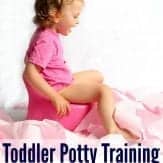

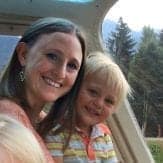


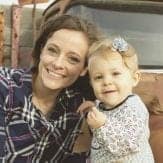
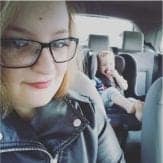
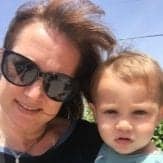

I really love your articles, the quality of writing and the authenticity is wonderful. Thank you for your sharing! I started with your one on 2 year olds waking up 57 times while I lay in bed furiously looking up what to try after our own 2 year old was on her 10th time, ha ha. But jumping around your website has been awesome.
Just fyi some of the links to products are no longer working :).